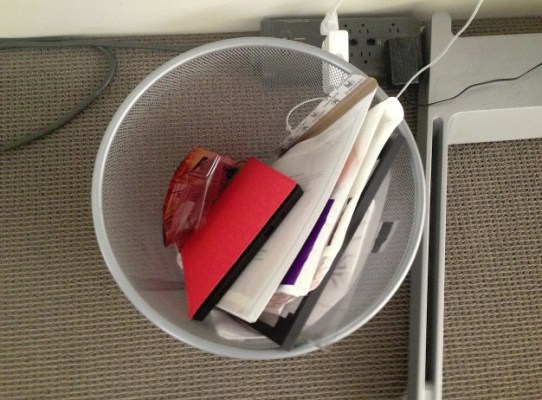A class-action lawsuit filed against Microsoft alleges that the company issued false statements regarding the performance of its Surface RT tablet, and did not fairly value its inventory of the devices at the end of its third fiscal quarter.
The issue at hand is that Microsoft took an externally unexpected $900 million charge relating to the value of its Surface RT inventory during its fiscal fourth quarter. Surface RT is Microsoft’s first tablet hybrid, marking its entry into parts of the OEM space that it had not tread before.
Sales, it seems, were low. This led to Microsoft revaluing its inventory, forcing it to write down $900 million. However, the lawsuit claims that Microsoft knew that the Surface RT was in trouble long before, and therefore it committed fraud by not telling investors that its tablet was struggling during its fiscal third quarter.
The $900 million writedown led to an earnings miss for Microsoft. The company’s stock fell more than 11 percent the next day, erasing north of $30 billion in market share. The bent of the lawsuit is therefore simple: If Microsoft did not faithfully report the performance of the Surface RT, in spoken and written word, and in sworn accounting testimony, investors were duped into thinking that all was well regarding the Surface project. Or at least that things weren’t dire enough to warrant a near $1 billion charge.
And if they were misled, only to have Microsoft drop a $0.07 per share charge onto their laps at the end of its fiscal year, that’s something of an issue.
There are two questions that will determine if the lawsuit has any merit whatsoever: Was Microsoft out of line in its comments regarding its fiscal third-quarter earnings call and relevant activities, and did it commit any sort of accounting error by not writing down Surface inventory earlier?
The most interesting evidence that the lawsuit alleges as material to its claim of fraud is that Microsoft indicated that fiscal fourth-quarter revenue would be “similar to [the fiscal third quarter] … [and will] continue to reflect sales of Surface.” In the third quarter, Windows division revenue that was not derived from OEM incomes rose 40 percent, reflecting Surface sales in part.
So, Microsoft made a comment that appeared to indicate that its Surface product was generating sales that would continue to impact — and the implication here is less strong than the lawsuit would like — Windows division revenue positively.
Other evidence that Microsoft made materially incorrect statements about how Surface RT was performing aren’t strong. Here’s Ballmer, as cited by the lawsuit:
The bold bets that we made on cloud services are paying off as people increasingly choose Microsoft services including Office 365, Windows Azure, Xbox LIVE, and Skype. While there is still work to do, we are optimistic that the bets we’ve made on Windows devices position us well for the long term.
None of that states that the Surface RT project is doing well now. Instead, Ballmer notes plainly that “there is still work to do.” I think that that provides more than ample hedging for the CEO. Naturally, if you are curious and require more than my short synthesis, I recommend the full legal document.
The strongest positive comments that are cited about Surface RT in the lawsuit tend to quote the Surface Pro instead, a product that is performing better around the world. Then co-head of the Windows division Tami Reller did state that “Our deep customer satisfaction surveys on the product show that there is very high satisfaction ratings with Surface. That’s true on Surface Pro, that’s high on Surface RT.”
That is a provable statement. Microsoft has only to produce its surveys, and the charge evaporates.
The only way I can see this lawsuit finding any sort of legs is if a weakness is found in Microsoft’s accounting practices — with a demonstrated paper trail — that the company deliberately avoided a charge to its Surface RT inventory to delay having to publicize its slow sales. And only if the “class” in “class action” can be fairly defined.
Given that the $900 million charge has been directly tied to a price cut that did not occur in the third fiscal quarter, I do not see how that is possible. You could argue that Microsoft could have been more pessimistic about the fortunes of its Surface RT inventory. But optimism isn’t fraud.
